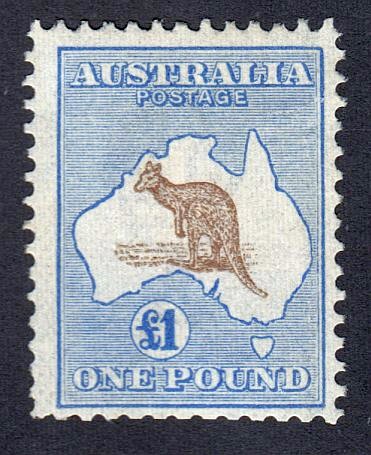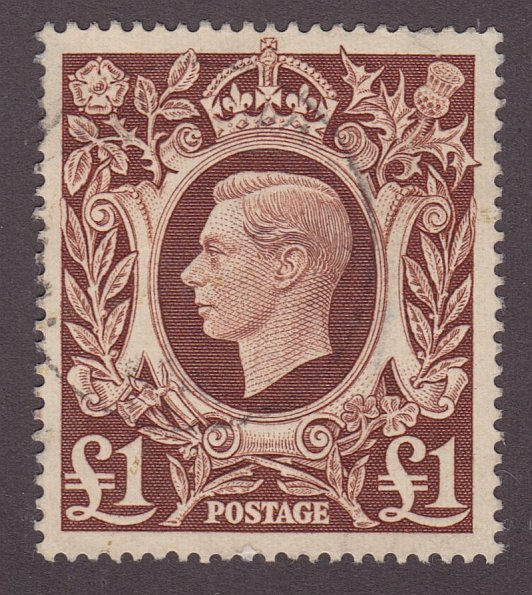
Discussion - Member to Member Sales - Research Center

Discussion - Member to Member Sales - Research Center

What is a Helecon Stamp?
Helecon was a trade name for a phosphor fluorescent from the zinc-sulfide group that reacts to Ultra Violet light and fluoresces a bright orange red. The UV range it is sensitive to is 3000 - 4000 Angstroms (unit of length used chiefly in measuring wavelengths of light). It was applied on and after 1965 to all postage stamps to allow for automatic cancellation of letters. The machinery would simply detect the presence of the stamp, somewhere on the envelope, and react accordingly.
Most Helecon issues are considerably paler than their non-Helecon counterparts. When viewed under a UV lamp all Helecon issues are dramatically different in appearance.
Helecon Ink versus Helecon Paper.
Helecon ink was only used on the 5d Queen Elizabeth II red. All other stamps used Helecon coated paper.
However, it is this issue, and primarily it's change in colour from Green to Red, that gives the game away. The 5d Red was the defining moment when all Australian postage changed to Helecon. There is confusion with these Green / Red varieties with / without Helecon ink / paper. The bottom line is that, red stamps, coils and booklets contain Helecon ink, green stamps and booklets (there were no coils) contain no Helecon. There are exceptions though such as Helicon Coated Paper.
Helecon Coated Paper.
Print rolls were coated with Helecon on one side of their surfaces. The paper was first trialed on the 11d Bandicoot and issued in December, 1963.
No further Helecon issues were produced until 1965, when all stamps were subsequently printed on this paper.
5d Red: Helecon Ink.
In 1965, non Helecon paper stock was expediently used up by mixing Helecon in the printing ink.
The Queen Elizabeth II 5d Green definitive was changed to Red specifically for this purpose and is the only issue to use Helecon ink. In fact, the ink supply ran out before the paper did, and the final printings of this issue untreated.
Churchill Chambons.
Paper stock for the photogravure process was different than the rotary recess issues. A supply of Helecon treated paper became available in early 1965. The Churchill issue represents a 50% mixture of old print rolls to use up stock. The 9d magpie was actually the first to use the new paper a few months earlier and was probably a test print run to check for suitability.
There were five Chambons.
1) Winston Churchill
2) John Monash
3) John Hargraves
4) International Co-Operation Year (ICY)
5) Xmas 1965.
Altogether there were 12 Helecon stamps.
1) 2d Queen Elizabeth II
2) 3d Queen Elizabeth II
3) 8d Tigercat
4) 11d Bandicoot
5) 1/2 Tasmanian Tiger
6) 2/3 Flower
7) 1/- Colombo
8) 5d Red Queen Elizabeth II
9) 6d Thornbill
10) 9d Magpie
11) 1/6 Galah
12) 5d Churchill

1 Member
likes this post.
Login to Like.
That is some fine information. Thank you.
Eric

Login to Like
this post
Hi Eric
I'm compiling more info about Australian stamps, I hope they too will be interesting to the philatelist.
Rob

Login to Like
this post
Member ACCC (Australian Commonwealth Collectors Club of NSW)
02 Aug 2016
03:09:59pm
QUEEN ELIZABETH II
What is a Helecon Stamp?
Helecon was a trade name for a phosphor fluorescent from the zinc-sulfide group that reacts to Ultra Violet light and fluoresces a bright orange red. The UV range it is sensitive to is 3000 - 4000 Angstroms (unit of length used chiefly in measuring wavelengths of light). It was applied on and after 1965 to all postage stamps to allow for automatic cancellation of letters. The machinery would simply detect the presence of the stamp, somewhere on the envelope, and react accordingly.
Most Helecon issues are considerably paler than their non-Helecon counterparts. When viewed under a UV lamp all Helecon issues are dramatically different in appearance.
Helecon Ink versus Helecon Paper.
Helecon ink was only used on the 5d Queen Elizabeth II red. All other stamps used Helecon coated paper.
However, it is this issue, and primarily it's change in colour from Green to Red, that gives the game away. The 5d Red was the defining moment when all Australian postage changed to Helecon. There is confusion with these Green / Red varieties with / without Helecon ink / paper. The bottom line is that, red stamps, coils and booklets contain Helecon ink, green stamps and booklets (there were no coils) contain no Helecon. There are exceptions though such as Helicon Coated Paper.
Helecon Coated Paper.
Print rolls were coated with Helecon on one side of their surfaces. The paper was first trialed on the 11d Bandicoot and issued in December, 1963.
No further Helecon issues were produced until 1965, when all stamps were subsequently printed on this paper.
5d Red: Helecon Ink.
In 1965, non Helecon paper stock was expediently used up by mixing Helecon in the printing ink.
The Queen Elizabeth II 5d Green definitive was changed to Red specifically for this purpose and is the only issue to use Helecon ink. In fact, the ink supply ran out before the paper did, and the final printings of this issue untreated.
Churchill Chambons.
Paper stock for the photogravure process was different than the rotary recess issues. A supply of Helecon treated paper became available in early 1965. The Churchill issue represents a 50% mixture of old print rolls to use up stock. The 9d magpie was actually the first to use the new paper a few months earlier and was probably a test print run to check for suitability.
There were five Chambons.
1) Winston Churchill
2) John Monash
3) John Hargraves
4) International Co-Operation Year (ICY)
5) Xmas 1965.
Altogether there were 12 Helecon stamps.
1) 2d Queen Elizabeth II
2) 3d Queen Elizabeth II
3) 8d Tigercat
4) 11d Bandicoot
5) 1/2 Tasmanian Tiger
6) 2/3 Flower
7) 1/- Colombo
8) 5d Red Queen Elizabeth II
9) 6d Thornbill
10) 9d Magpie
11) 1/6 Galah
12) 5d Churchill

1 Member
likes this post.
Login to Like.

re: HELECON STAMPS
That is some fine information. Thank you.
Eric

Login to Like
this post
Member ACCC (Australian Commonwealth Collectors Club of NSW)
04 Aug 2016
01:57:58pm
re: HELECON STAMPS
Hi Eric
I'm compiling more info about Australian stamps, I hope they too will be interesting to the philatelist.
Rob

Login to Like
this post


